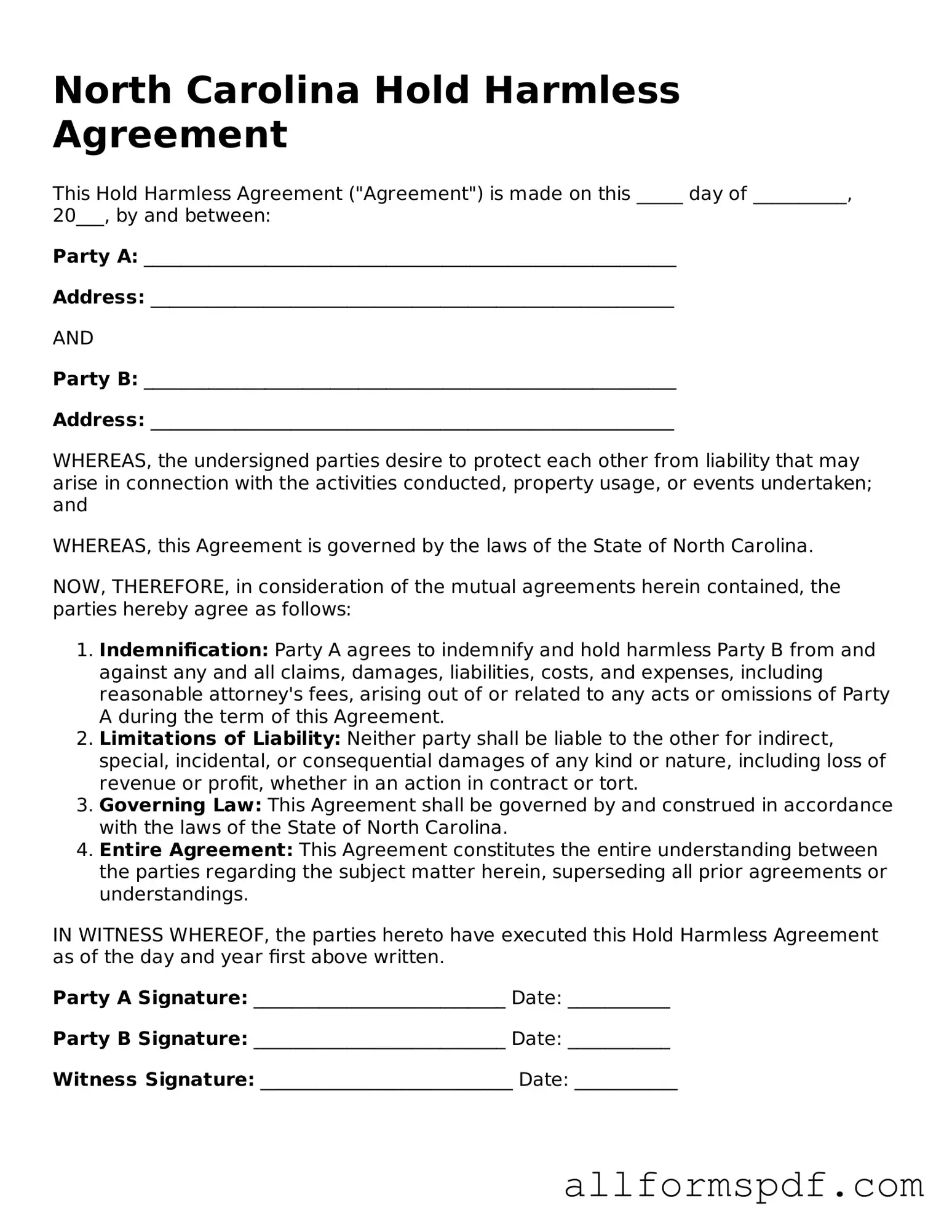When filling out the North Carolina Hold Harmless Agreement form, many people make common mistakes that can lead to complications. One frequent error is failing to read the entire form before signing. Skimming through the document may result in overlooking important clauses or requirements that could impact the agreement's validity.
Another mistake is not providing complete information. Incomplete details, such as missing names, addresses, or dates, can render the agreement unenforceable. It's essential to ensure that all required fields are filled out accurately to avoid any issues later on.
People often forget to include the specific activity or event that the agreement pertains to. Without this information, the scope of the agreement becomes unclear, which can lead to misunderstandings about what is covered.
Some individuals neglect to date the agreement. A missing date can create confusion regarding when the agreement takes effect. This can be particularly problematic if a dispute arises, as parties may have different interpretations of the timeline.
Failing to identify all parties involved is another common mistake. If the agreement is meant to protect multiple individuals or entities, each must be clearly named. Omitting a party can expose them to liability despite the intention to provide protection.
Another issue arises when people do not understand the terms they are agreeing to. It's crucial to grasp the implications of the agreement fully. Signing without comprehension can lead to unintended consequences.
Some individuals may also overlook the need for witnesses or notarization. Depending on the circumstances, having a witness sign the agreement can add an extra layer of validity. Notarization may also be required to ensure that the agreement holds up in legal situations.
People sometimes use vague language when describing the terms of the agreement. Clear and precise wording is vital to prevent ambiguity. If the terms are not well-defined, parties may interpret them differently, leading to disputes.
Lastly, individuals may not keep a copy of the signed agreement. Failing to retain a copy can create challenges if the agreement needs to be referenced in the future. Always ensure that all parties have a signed copy for their records.
